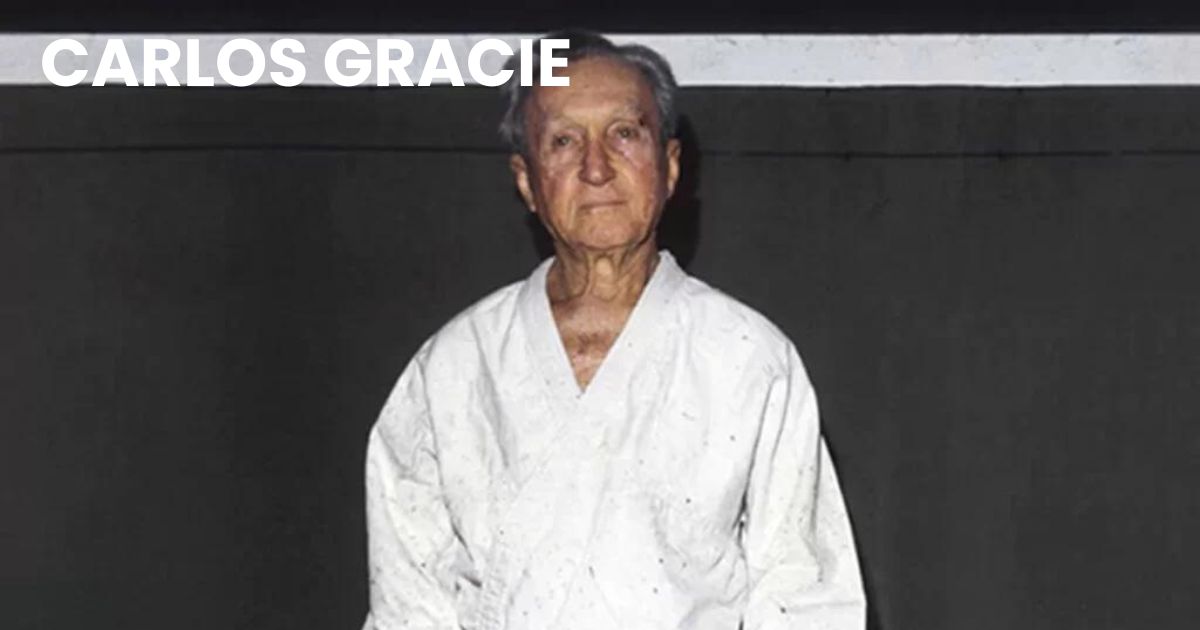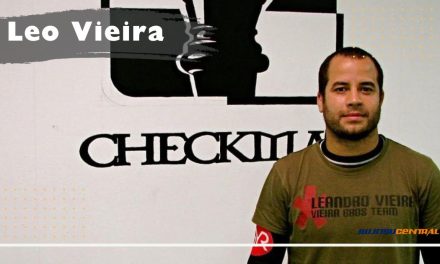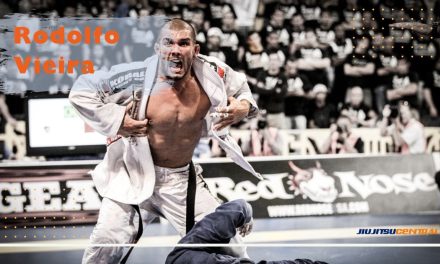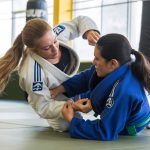Carlos Gracie, born in 1902, was a pivotal figure in the development of Brazilian Jiu-Jitsu (BJJ). As one of the main architects of this martial art, he transformed the landscape of combat sports through his innovative techniques and strategic thinking. His early life was marked by exposure to traditional Japanese Jiu-Jitsu, which he and his brothers adapted into a new form more suited to real-life self-defense situations.
The establishment of Brazilian Jiu-Jitsu under Carlos Gracie’s guidance was more than a mere contribution to martial arts; it was the beginning of a widespread philosophy. Carlos Gracie didn’t just focus on the physical aspects of fighting. He instilled a comprehensive lifestyle that emphasized diet, mental discipline, and a holistic approach to health, which became known as the “Gracie Diet.”
The Gracie family’s legacy, continued by Carlos’s descendants, is more than just a lineage of fighters; it represents an enduring influence on martial arts and popular culture. The expansion and success of BJJ can be seen globally, with countless schools and practitioners following the Gracie methodology. Carlos Gracie’s technical contributions have evolved, enhancing the art of BJJ, while his philosophy has influenced fighters and non-fighters alike.
Key Takeaways
- Carlos Gracie was instrumental in the creation and dissemination of Brazilian Jiu-Jitsu.
- He developed not only fighting techniques but also a lifestyle philosophy emphasizing health and mental discipline.
- The Gracie legacy continues to shape martial arts and has impacted global culture and community.
Early Life and Influence
You will discover how Carlos Gracie’s childhood laid the foundation for a martial arts revolution.
Family and Martial Arts Heritage
Carlos Gracie was born on September 14, 1902, in Belém, Brazil. He was one of five Gracie brothers who would go on to play essential roles in the development of Brazilian Jiu-Jitsu (BJJ). The Gracie family‘s martial arts lineage began with their father, Gastão Gracie, who was a business partner of the Japanese Judo master Mitsuyo Maeda.
- Carlos Gracie was the eldest son.
- The family’s connection to Mitsuyo Maeda was pivotal in their martial arts journey.
Training with Mitsuyo Maeda
Your understanding of Carlos Gracie’s martial arts training begins with Mitsuyo Maeda, who was also known as “Count Koma.” Maeda was a direct student of Judo founder Jigoro Kano and had a profound impact on Carlos.
- Enrollment: Carlos started learning from Maeda in 1917.
- Knowledge Transfer: The techniques and philosophies of Judo imparted by Maeda formed the cradle of BJJ.
“Mitsuyo Maeda’s teachings were crucial in the formation of Carlos’s own fighting system,” which would eventually differentiate itself from traditional Judo and become known as Brazilian Jiu-Jitsu.
Establishment of Brazilian Jiu-Jitsu
As you explore the roots of Brazilian Jiu-Jitsu, you will discover its transformation from traditional Japanese Judo into the distinct martial art it is today, largely thanks to Carlos Gracie. This evolution began in Rio de Janeiro and led to the founding of the first academy dedicated to teaching the style now known as Gracie Jiu-Jitsu.
Adaptation from Traditional Judo
Carlos Gracie, a Brazilian martial artist, encountered Judo—at that time referred to as Kano Jiu-Jitsu—after Judoka Kanō Jigorō’s techniques were brought to Brazil. Gracie learned Judo from Mitsuyo Maeda, a student of Jigorō. He saw the potential to adapt these techniques to suit a smaller, less physically imposing practitioner, focusing on ground fighting and submission holds. His adaptation emphasized leverage and technique over brute strength, allowing a weaker individual to defend themselves against a larger opponent effectively.
Key Judo concepts retained:
- Emphasis on efficiency
- The principle of maximum effectiveness with minimal effort
- The importance of ground control
Key adaptations for Brazilian Jiu-Jitsu:
- Development of a refined ground-fighting system
- Greater focus on submissions
- Tailoring techniques to benefit those with a smaller stature
Founding the First Academy
In 1925, Rio de Janeiro became the birthplace of the first Brazilian Jiu-Jitsu academy, established by Carlos Gracie. This marked the inception of Gracie Jiu-Jitsu. The academy was not only a place for learning martial arts but also a hub for the development and propagation of Brazilian Jiu-Jitsu. Carlos, along with his brothers, began teaching the art they had refined to a broader audience, giving rise to the global martial arts community’s interest.
At this academy, the Gracie family also introduced the Gracie Diet, a unique nutritional philosophy intended to complement their training regimen. Furthermore, the academy became a testing ground for refining techniques and creating a structured curriculum that would lay the foundation for Brazilian Jiu-Jitsu instruction worldwide.
- Milestones:
- 1925: Establishment of the first Brazilian Jiu-Jitsu academy
- Pioneering the teaching of Gracie Jiu-Jitsu
- Integration of a dietary regimen to enhance physical conditioning and performance
Through Carlos Gracie’s innovative vision and the establishment of the first academy, the martial art of Brazilian Jiu-Jitsu was born—transforming the landscape of combat sports and self-defense practices across the world.
Gracie Philosophy and Legacy
The philosophy and legacy of Carlos Gracie extend beyond the mats into aspects of wellness and personal discipline that you can apply in everyday life.
Development of the Gracie Diet
Carlos Gracie conceived the Gracie Diet based on the principle that food combinations are crucial for optimal digestion and health. You would find that the diet emphasizes a structured eating schedule, avoiding the mixing of certain food groups and promoting the consumption of others within specific time intervals. Here’s a simplified representation of some core combinations to follow in the Gracie Diet:
- Grains: Do not combine with other starches, fat-rich foods, or sugar.
- Vegetables: Combine well with most foods except for desserts and sweet fruits.
- Fruits: Classified into groups that should only be consumed with their kind or on an empty stomach.
Influence on Martial Arts and Lifestyle
Carlos Gracie’s influence on martial arts stretches much further than the establishment of Brazilian Jiu-Jitsu. Your understanding of martial arts would deepen when you grasp the holistic lifestyle that comes with the Gracie philosophy. It’s about being a “positive man”, someone who finds and pushes the limits of their knowledge and abilities while embodying balance and integrity.
The Gracie philosophy encourages you to transcend physical training, fostering mental and spiritual growth. You become not just a practitioner of techniques but also an adherent to a way of life that promotes continuous personal improvement. This legacy is evident as many adopt such tenets globally, influencing their approach to martial arts and beyond.
Expansion and Success
In the midst of a growing martial arts movement, Carlos Gracie initiated a legacy with the expansion of Brazilian Jiu-Jitsu (BJJ) on a global scale and established a landmark school that would become a cornerstone of the discipline.
Technical Contribution and Evolution
Carlos Gracie’s impact on martial arts transcends the development of Brazilian Jiu-Jitsu (BJJ). Your understanding of his technical contribution and the evolution of this fighting style is crucial.
Promotion of Specific Techniques
Carlos Gracie emphasized the importance of ground fighting techniques, which constitute the core of BJJ. He championed the use of submissions, chokes, and joint locks, establishing a curriculum that prioritized these elements. The guard position was one of the techniques that Gracie helped to refine, encouraging fighters to use it as a strong defensive and offensive position. For instance:
| Technique | Role in BJJ |
|---|---|
| Triangle Choke | Offensive move from the guard position |
| Kimura Armlock | Joint lock used for controlling or submitting the opponent |
| Rear Naked Choke | Dominant submission from the back mount |
These techniques have been fundamental in developing what is often referred to as a complete jiu-jitsu game.
Philosophy of Teaching and Training
Carlos Gracie’s teaching method stresses a holistic approach to BJJ, incorporating a balanced diet, physical training, and mental conditioning. He fostered a philosophy where the training regime is as important as the techniques themselves, supporting the idea that a well-prepared body and mind create the most effective combative game. His regime was based on creating a strategic teaching method that imbues a deep understanding of the principles of leverage and timing. This method ensures that smaller and less strong individuals could excel against larger opponents, pushing the boundaries and reshaping the martial arts curriculum of his time.
Gracie Family and Continuing Lineage
The Gracie Family’s martial arts dynasty, initiated by Carlos Gracie, lives on through his relatives, including Helio Gracie, and the subsequent generations who continue to shape Brazilian Jiu-Jitsu (BJJ).
Notable Family Members
Carlos Gracie, the patriarch, established the first Gracie Jiu-Jitsu Academy. Helio Gracie, his brother, adapted the techniques due to his smaller frame, which significantly influenced BJJ. Rolls Gracie, son of Carlos, revolutionized the art by incorporating elements of wrestling and judo. Royce Gracie brought international attention to the discipline by winning the first Ultimate Fighting Championship (UFC).
- Carlos Gracie Jr., son of Carlos Gracie, founded the International Brazilian Jiu-Jitsu Federation (IBJJF), ensuring structured competition and fostering the global growth of the sport.
The Next Generation of Gracie Fighters
The Gracie legacy is upheld by a new wave of martial artists. These fighters uphold their family’s reputation in BJJ and continue to push the boundaries of the sport across global platforms. They carry the technical expertise and philosophy of their forebears into contemporary combat arenas.
Cultural and Community Impact
Carlos Gracie’s legacy has permeated Brazilian society and has been influential far beyond the martial arts community.
Influence on Brazilian Culture
Your appreciation of Brazilian culture might deepen when you learn about the profound effect a single individual like Carlos Gracie can have. Carlos Gracie, a legendary figure in Brazil, is often credited with popularizing Brazilian Jiu-Jitsu (BJJ), a martial art that has roots in Kodokan Judo and often incorporates elements of capoeira. These practices under Gracie’s influence have become a symbol of national identity to some extent. They embody a blend of discipline, physical prowess, and tactical thinking that mirror Brazilian society’s values. Through his establishment of the first Brazilian Jiu-Jitsu academy in 1925, Gracie’s teachings have fostered a sense of community, promoting both physical and moral discipline.
Contributions Beyond the Mat
On the mat, Gracie’s emphasis on discipline and technique set a standard in martial arts. Off the mat, his philosophy extended to his idea of the Gracie Diet, promoting a unique nutritional plan focused on optimizing the body for performance and health. These practices promote a holistic approach to well-being, further signifying Gracie’s deep impact not just on martial arts, but also on the larger notion of humanity—encouraging individuals to live balanced and healthy lives. Through BJJ, Carlos Gracie offered a pathway that many have followed, using the discipline required in martial arts to enhance their life skills, building stronger communities.
By instilling values that transcended the sport, Gracie’s influence is one that continues to echo throughout various realms of society, reflecting a powerful cultural and community legacy.
Media and Publications
Carlos Gracie’s influence has extended beyond the mats and into various forms of media. Your insights into Brazilian Jiu-Jitsu can be enriched by exploring these resources such as the best BJJ Fighters.







